“There came a time when the old gods died…”
So begins the first issue of Jack Kirby’s NEW GODS #1, the centerpiece of what many consider the crowning work of his career, the “Fourth World” saga of interconnecting titles for DC Comics. But in a way, that opening also served as notice to comics fans that the old days of Stan and Jack, the Lee/Kirby team that had revolutionized comics at Marvel, was blown apart, finished, and in its place was a new world, sprung entirely from the muse of Kirby alone. This week we’ll take a look at Kirby’s splashy debut for DC Comics, as well as the frustrating circumstances behind its demise.
As more and more of the plotting had fallen to him on Marvel works like FANTASTIC FOUR and THOR, Kirby reportedly disliked the fact that often Stan Lee’s scripting didn’t properly reflect the direction or tone of the stories as he’d conceived them. During his last few years at Marvel, Jack had been developing and sketching a whole army of new characters and keeping them to himself, out of any Marvel books. Since there was no creator ownership in mainstream comics at the time, Kirby wasn’t about to turn this newest, extremely personal concept over to Marvel, so away they went into the drawer. In 1970, an increasingly frustrated Jack Kirby quit working at Marvel Comics. (In a famous rumor, no one working at Marvel at the time received any sort of formal memorandum informing them that Jack Kirby, the co-creator of so many of their characters, had left the company. Instead, there was only one of Jack’s trademark cigars pinned to a wall with a note attached reading “I quit!” Kirby was living in California at the time, far from Marvel’s New York offices, so no one knows who really nailed the stogie to the wall.)
When then-DC Comics publisher Carmine Infantino made Jack an offer to come over to DC, Kirby accepted, and brought his new concepts with him. As the story goes, Infantino wanted Kirby to handle at least one existing title in addition to the new books he was planning on creating. Kirby had no great love for any of the DC books, and didn’t want to boot another artist out of a job, so he told Infantino to just give him whatever book didn’t have an artist; it could be the lowest-selling title DC published, he didn’t care. As a result, Jack Kirby made his post-Marvel DC debut in October 1970 on SUPERMAN’S PAL JIMMY OLSEN #133.
Readers expecting the placid, Mort-Weisinger-style Jimmy Olsen stories they’d been seeing for years were in for a shock; suddenly every issue was full of new concepts: the Whiz Wagon, Project Cadmus, the Hairies, a new Newsboy Legion and Guardian (revivals of previous Golden Age Kirby work for DC), and lurking in the background, a mysterious new villain that would soon become very important in the rest of Kirby’s DC work.
In fact, the new Kirby take on SUPERMAN’S PAL JIMMY OLSEN was so revolutionary that Infantino ordered that the faces of established Superman characters like Superman, Perry White and Jimmy Olsen be either redrawn or heavily inked by established Superman artists Al Plastino, Murphy Anderson and Curt Swan. Kirby fans then and now were outraged at the decision, but reportedly Kirby didn’t mind. He was too busy putting the finishing touches on the debut issues of his three new series for DC, which he would write, draw and edit. Kirby was in complete control of his work, for probably the first time in his career, and his enthusiasm showed.
In 1971, three new Kirby titles debuted from DC Comics: FOREVER PEOPLE, NEW GODS and MISTER MIRACLE. Together with the stories in JIMMY OLSEN, these stories were intended by Kirby to be part of an interconnected epic, running 40 or 50 issues of each of the three central titles, and culminating in a grand finale for the entire saga, which would then be slightly condensed and reissued as a series of hardcover collections for mass-market bookstores. It’s important to remember the time frame: this is 1971 we’re talking about. There are no miniseries in comics, never have been, and comics weren’t designed to be finite, to have endings. And the idea of reprinting the comics in a hardcover? Selling to bookstores? Ludicrous. Comics are sold at newsstands and grocery stores, and that’s it. Kirby was about 25 years ahead of the industry, correctly predicting what would eventually become the lifeblood of today’s modern comics market.
Sadly, Kirby’s epic was never properly finished. After only 11 issues each of NEW GODS and FOREVER PEOPLE, and 18 issues of MISTER MIRACLE, Kirby’s series were cancelled, ostensibly for low sales, a claim which remains in question to this day. Some fans and critics have accused Carmine Infantino of canceling the books because he didn’t “get” them, or because they “looked too much like Marvel books.” As with most things, I think the truth lies somewhere in the middle. Infantino steadfastly maintains that the sales weren’t there, that it was purely a business decision. Other historians claim the sales were steady if not spectacular, and certainly not the worst-selling DC titles by far. Still, it’s easy to imagine that your average 1970s-era comic reader might have been a little taken aback by the dynamic, explosive work unlike anything else DC was publishing, not to mention Kirby’s, shall we say, unique approach to dialogue, which often sounds little like any form of discourse commonly used, and could more properly be termed a kind of “free-form word jazz.”
On the other hand, DC Comics, and particularly Infantino, were known to be openly contemptuous of the Marvel style at that time, and I could certainly envision a situation where they might jump at any opportunity to declare these books unsuccessful, as opposed to giving them more time to build an audience. Regardless, the books were axed. Kirby created a second wave of titles for DC, including OMAC, KAMANDI and THE DEMON, then returned to Marvel for a brief stint, eventually winding up working in animation. Meanwhile, later DC editors realized the genius of the original Kirby “Fourth World” series, and asked him to return to give the series a grand finale. Kirby made several attempts, first in a new NEW GODS reprint series and then in the DC graphic novel THE HUNGER DOGS, but both DC and Kirby agreed that they were less than successful, and so Kirby’s characters have remained active in the DC universe ever since.
Here’s the basic premise, from where we began:
“There came a time when the old gods died…”
In the opening pages we see a conflagration of warriors (who perhaps not-so-coincidentally resemble Kirby’s depictions of the Asgardians from the pages of Marvel’s THOR) in their final battle, just before their home explodes in a mighty cataclysm. From that destruction is born two worlds: New Genesis, a lush, green paradise, and Apokolips, a foul, industrial world whose enormous fire pits feed on the planet itself to provide warmth and light.
The residents of New Genesis, the New Gods, live in peace and tranquility in Supertown, a massive city hovering high over the surface of the planet, under the rule of Izaya the Highfather, who is able to commune with the mysterious voice of all wisdom and knowledge known as “The Source.”
Apokolips, however, is ruled by the iron fist of Darkseid, a mighty despot who has enslaved all his world’s inhabitants in his quest for the Anti-Life Equation, the knowledge of which will grant him complete control over all living things.
An uneasy peace existed between the two worlds for a time, as a result of the events detailed in “The Pact!” Izaya, having forsaken violence at the height of the war with Apokolips and embraced peace through his newfound connection with The Source, agrees to exchange heirs with Darkseid to put an end to all hostilities. Darkseid’s savage son Orion, having no clue as to his true parentage, is sent to New Genesis to be raised by Highfather. Meanwhile, Highfather’s infant child is delivered to Darkseid, who hands the baby over to Granny Goodness, overseer of the orphanages that train Darkseid’s hordes of mindless soldiers. Ever plotting, Darkseid informs Granny that one day the child might “conveniently” escape, on which day the pact would be broken, and hostilities commence. In a bitterly ironic touch, Granny names the infant “Scott Free.”
“The Pact!”, appearing in NEW GODS #7, was often referred to by Kirby himself as his favorite of all the stories he’d created. It’s easy to see why. Before this, the story had moved along at a breakneck pace, with concepts and characters being introduced non-stop. Here, we get the first glimpse of backstory in the saga, as Darkseid engineers the murder of Izaya’s wife, setting off the war between New Genesis and Darkseid. We see the ferocity of war as only Kirby could portray, and the despondency of Izaya as he realizes war has ravaged his once-verdant world. There are also classic Kirby touches like Izaya’s first communion with The Source, in a moment that’s both evocative of his best work at Marvel and yet entirely new, and uniquely Kirby.
The NEW GODS stories are bursting with new characters and concepts. The central protagonist is the now-grown Orion, who finds himself as protector of Earth after freeing five humans from Darkseid’s labs on Apokolips, where he had been searching their minds for the Anti-Life Equation, believed to lay dormant in the mind of a human somewhere on Earth.
Beneath Orion’s helmet lies the handsome face of a native of New Genesis – or so it would appear. As it turns out, Orion’s savage Apokolipsian features are altered and refined by the powers of the Mother Box.
The Mother Boxes, worn by all the New Gods, are sentient computers linked to The Source, as well as to their wearers. The Mother Box can be injured, feel pain and even be killed, and can be healed by the wearer projecting his faith and love for the device into the Mother Box.
Orion’s best friend and ally in protecting Earth is Lightray, a fellow New God who can fly at tremendous speeds and generate and project solar energy. Lightray’s lighthearted and jovial nature complements Orion’s brooding, violent nature.
The New Gods and Darkseid and his minions travel between New Genesis, Apokolips and Earth by means of the Boom Tube, an instantaneous teleportational gateway created by Metron, a leading scientist from New Genesis obsessed with discovering the secrets of the universe, and especially The Source.
Metron travels the universe via his flying Mobius Chair, an invention he created that allows him travel through time, space and other dimensions. Metron created the chair thanks to the X-Element, a rare substance he obtained from Darkseid in exchange for a matter threshold device which Darkseid used to devastate New Genesis in their ongoing war. Darkseid’s war atrocities caused a change in the formerly neutral Metron, who now dedicated himself to defeating the dictator of Apokolips.
Among the Apokolipsian threats that Orion faces are the underwater warriors the Deep Six, the energy vampire Mantis, who raised his own army of “bug people” to invade Earth, and his own half-brother Kalibak, son of Darkseid from a previous, secret marriage.
The savage and brutal “Kalibak the Cruel” proves to be almost an equal match for Orion in their two tremendous battles on Earth. The scales are tipped in Kalibak’s favor in their second battle (in NEW GODS #11), and Darkseid, observing from Apokolips, discovers the reason why: Desaad, Darkseid’s chief torturer and toady, who was remotely increasing Kalibak’s strength, and then using his machines to experience the emotions of the two combatants. Despite Darkseid’s long history with Desaad (Desaad had poisoned Darkseid’s mother at his order, making Darkseid ruler of Apokolips; appropriate, since Desaad had earlier poisoned Darkseid’s intended bride, at the behest of his disapproving mother…), Darkseid is infuriated at the potential harm to his son Orion, and unleashes the dreaded Omega Effect on Desaad, vaporizing him.
As for Darkseid himself, he’s probably Jack Kirby’s single greatest creation. Looking as if he was carved from solid stone, Darkseid’s thirst for power motivates his every action, with his schemes for conquest often taking years to come to fruition. Darkseid doesn’t exhibit the weakness for honor that other Kirby villains show, such as Doctor Doom. One of the few weaknesses Darkseid does exhibit is emotion, namely pride in his son Orion, who opposes him at every turn. Kirby finds an interesting way to convey this visually: when Darkseid is meant to be at his most intimidating, implacable or otherwise inscrutable, his eyes are a solid mass of red, conveying no emotion. However, when he’s exhibiting fear, concern or jealousy, he’s drawn with normal pupils, making him appear more human and mortal. Over the years, Darkseid has become the most dominant villain in the DC Universe, appearing in almost every series at one time or another.
If NEW GODS provided the grand epic in Kirby’s new universe, MISTER MIRACLE was meant to show off a more ground-level, human struggle, while still providing the requisite Kirby high adventure. MISTER MIRACLE recounts the adventures of the aforementioned Scott Free, the child of Highfather who had escaped the slave pits of Apokolips and fled to Earth, where he performed as Mister Miracle, escape artist extraordinaire.
Scott takes over the “Mister Miracle” identity from the original bearer of the name, murdered escape artist Thaddeus Brown, in order to bring his killers to justice. Afterwards, Scott inherits the act, including Thaddeus’ assistant, the feisty dwarf Oberon. Scott manages to pull off his incredible escapes thanks to a combination of the survival skills he learned on Apokolips, the powers of his Mother Box, and his own unbreakable strength of will. According to Kirby biographer Mark Evanier, Kirby saw the MISTER MIRACLE comics as an analogue to his own life, “writing of his feelings of imprisonment in the comic-book industry and certain employment situations.”
Scott Free is soon joined on Earth by Big Barda (whom he would eventually marry), another refugee from the warrior factories of Apokolips, who had helped Scott to escape years before.
At the moment of Scott’s escape, Darkseid had appeared, knowing that once the child of Highfather leaves Apokolips, the Pact is broken, and he would be free to carry out his plans for conquest. All this meant nothing to Scott Free, who at last is able to pursue his own identity:
On Earth, Mister Miracle goes up against threats from Apokolips like Doctor Bedlam, the master of fear, and Dr. Virman Vundabar, sent by Granny Goodness to kill Scott Free for daring to escape her “loving care.” Scott also must contend with his larcenous manager, Funky Flashman, a fast-talking con artist who convinces Scott to retain his services. Many felt that Funky Flashman was a thinly disguised parody of Kirby’s former collaborator Stan Lee, known for his ability to hype the Marvel product in the press. Bolstering this theory was Funky’s obsequious manservant Houseroy, though to be a slam on Stan’s then-new assistant editor at Marvel, Roy Thomas.
While the MISTER MIRACLE series lacks the grandeur and scope of NEW GODS, it has a more human appeal with its down-to-earth setting, and thanks to its extremely likable characters in Scott Free, Barda and Oberon, is in my opinion the most creatively successful of the Kirby “Fourth World” books. (By the way, no one’s quite sure what “Fourth World” refers to; like a lot of Kirby’s names and phrases, he liked the way it sounded and just stuck with it, providing different rationales for it from time to time.) The third series, FOREVER PEOPLE, told the story of five adolescents from New Genesis who explored the Earth on their Super-Cycle, protecting the planet from Darkseid’s threats while learning about Earth’s people and customs.
Basically, it was “Super-Hippies from Outer Space.” Although well-intentioned, FOREVER PEOPLE lacked the high-octane drama of NEW GODS and the character appeal of MISTER MIRACLE, and in retrospect is the weakest of the three series.
Kirby’s New Gods have had some limited, but still pretty cool, media exposure. In 1984, the long-running and popular SUPERFRIENDS series on ABC was given an overhaul, becoming SUPERFRIENDS – THE LEGENDARY SUPERPOWERS SHOW for the ’84 – ‘85 season, and SUPER POWERS TEAM – GALACTIC GUARDIANS for the 1985 – 1986 season. In these two seasons, Darkseid and his gang of villains on Apokolips were featured as the primary antagonists, with Desaad, Kalibak and the Boom Tube spotlighted heavily. Darkseid was given a curious fixation with Wonder Woman as a running subplot, but I supposed that’s an easier sell to kids (and more important, to network executives) than the Anti-Life Equation.
In conjunction with the animated series, Darkseid, Desaad, Kalibak, Mantis, Orion, Mister Miracle and other Kirby characters were featured in the extremely popular SUPER POWERS action-figure line from Kenner. Not only were the figures very well done and quite faithful (with some nowadays going for big money on the collector’s market), but the characters were redesigned for the TV show and toys by Jack Kirby himself, providing him with his first royalties in over 40 years of work in comics. DC Comics has occasionally made the remark, with no undue pride, that they’ve paid Kirby more for creating Darkseid than Marvel did for creating their entire universe.
Darkseid and Orion made a return to television in a series of guest appearances in the 1996 SUPERMAN animated series from Warner Brothers Animation. The characters were handled extremely well, with much respect to the source material and their creator. Look out for the two-part episode “Apokolips…Now!”, which detailed Darkseid’s full-scale invasion of Metropolis, and the two-part episode “Legacy,” in which Superman in brainwashed by Darkseid into believing he’s Darkseid’s son. “Legacy” also features perhaps the most violent fight sequence ever produced for either the BATMAN or SUPERMAN animated series, with Superman taking out Darkseid in a manner that has to be seen to be believed. I’m still amazed they got away with it.

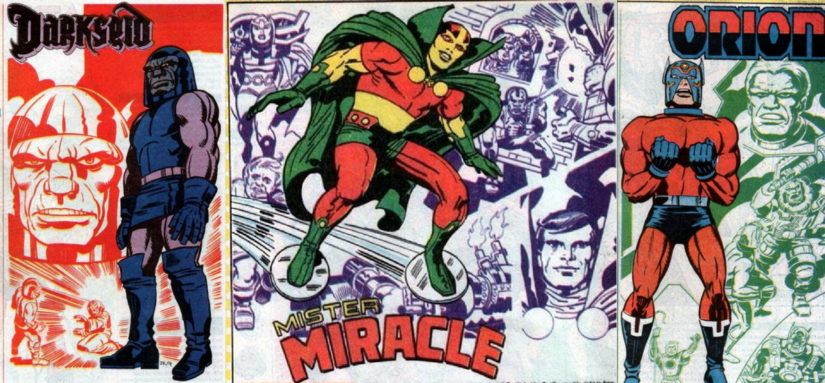
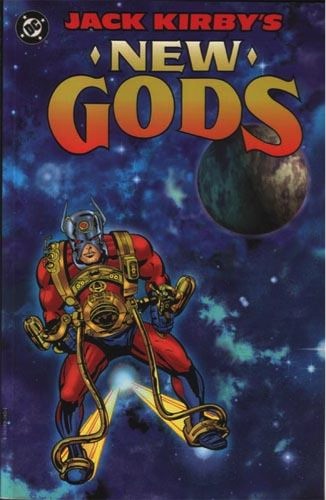


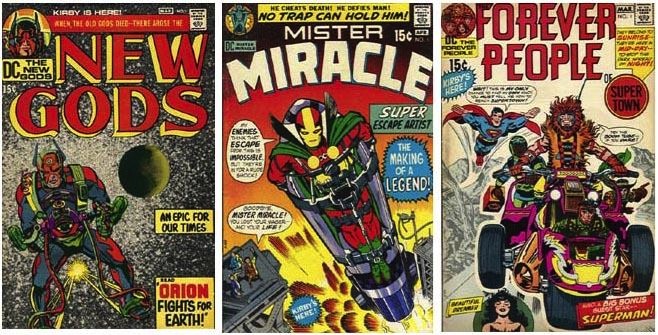


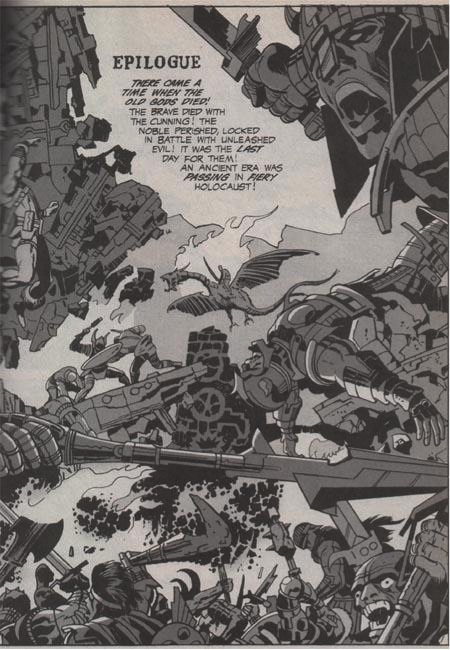



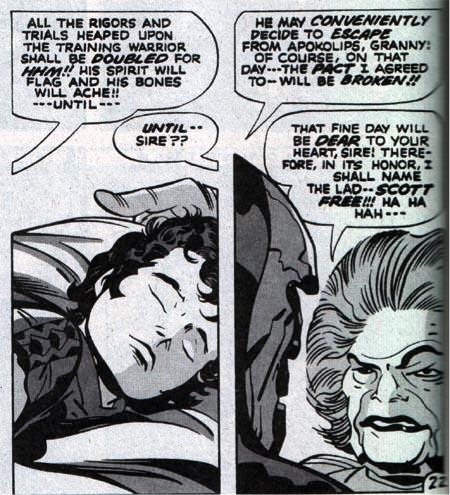




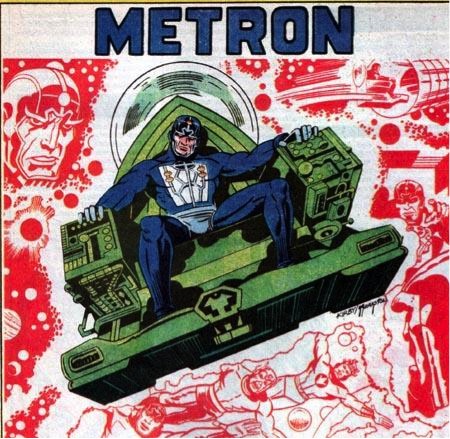

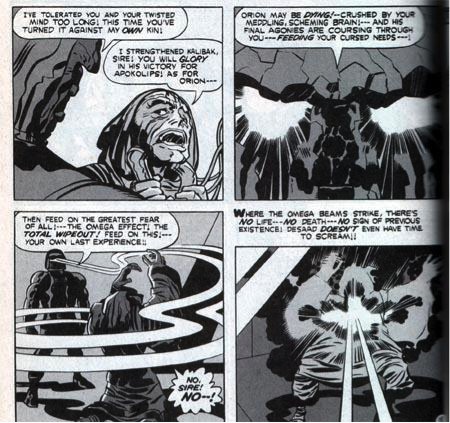



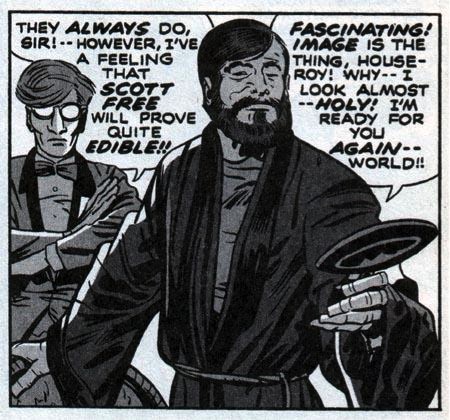



Comments are closed.